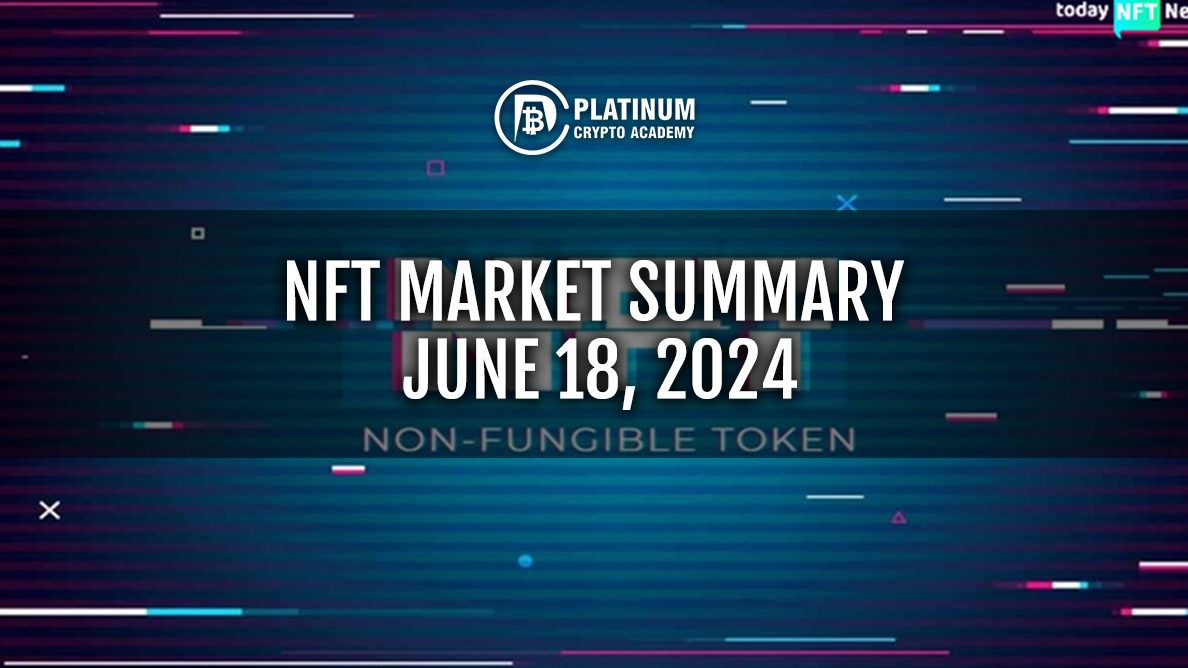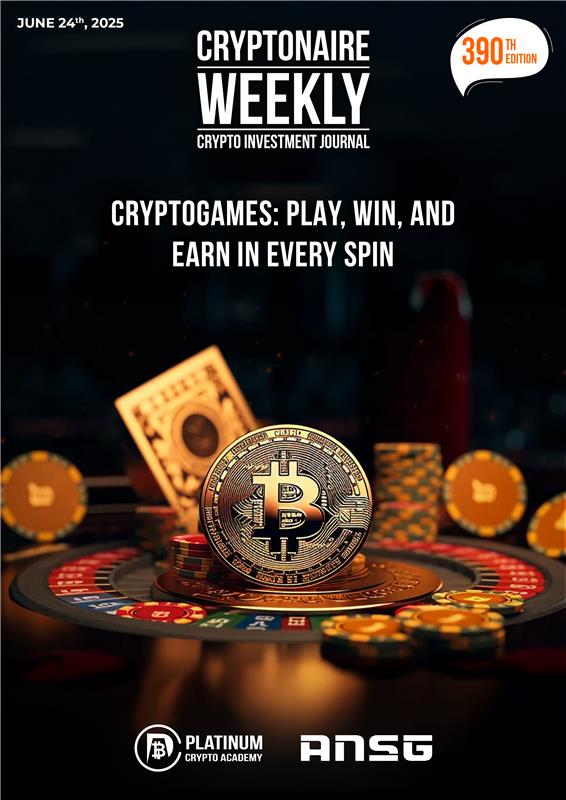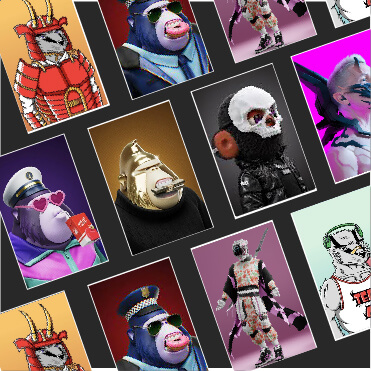NFT Market Trends: Bitcoin and Ethereum Lead Sales Volume
The NFT market has shown encouraging signs over the past two weeks, with sales volume rising steadily. This upward trend comes despite a decrease in the number of active buyers, indicating a shift towards quality over quantity among NFT investors.
Sales on the Rise: Overall NFT sales volume has grown by a total of 18.46% over the past two weeks, reaching $141.73 million this week. This consistent increase highlights the market’s resilience and its capacity to attract significant investment even amidst fluctuating participation rates. The upward trend is a promising sign that the NFT market is capable of sustaining growth, driven by a core group of dedicated investors and collectors who see long-term value in digital assets.
Bitcoin and Ethereum Lead the Pack: Bitcoin and Ethereum emerged as the top performers in terms of sales volume. Bitcoin sales surged by 31.84%, reaching an impressive $43.53 million. This surge marks a pivotal moment as Bitcoin, traditionally known more for its role as a digital currency and store of value, is now becoming a significant player in the NFT space. Meanwhile, Ethereum, the long-standing leader in the NFT market, saw its sales increase by 17.75%, totaling $40.97 million. This robust performance underscores Ethereum’s continued dominance and its critical role in the ecosystem, facilitating a wide range of NFT transactions and innovative projects.
Record-Breaking Sales: The week witnessed some notable NFT sales that have set new benchmarks. An Ethereum Name Service (ENS) domain name fetched a staggering $587,194, making it the most expensive NFT sold during this period. This record-breaking sale exemplifies the high value placed on digital identity and the growing importance of ENS in the blockchain community. Such high-value transactions not only boost market confidence but also attract attention to the potential profitability of unique and rare digital assets.
Diverse Interests: The market continues to showcase a strong interest in various NFT categories beyond just digital art. This diversification is evident from the significant sales of other collectibles, such as Protoshroom #6, which sold for $237,373, and Polygon’s TTAvatars #1280003, which fetched $100,500. These transactions highlight the broadening appeal of NFTs, encompassing a wide array of digital assets including gaming items, virtual real estate, and more. The variety in NFT categories suggests a maturing market where different niches can thrive, providing opportunities for both creators and investors to explore new frontiers within the digital collectible landscape.
Leading Digital Collectibles and Their Performance
While overall sales volume growth is a positive sign for the NFT market, diving into the leading collections reveals some interesting trends:
- Pizza BRC20 NFTs (561.67% Increase): This unexpected leader in sales growth showcases the dynamic nature of the NFT market. The massive surge in demand for Pizza BRC20 NFTs highlights the potential for lesser-known collections to explode in popularity. This surge might be driven by unique factors such as community engagement, innovative marketing strategies, or the inherent novelty of the collection. It underscores the unpredictable and rapidly evolving nature of the NFT market, where even niche collections can capture significant attention and investment.
- Immutable’s Guild of Guardians (31.61% Increase): This collection’s steady increase indicates a strong and potentially long-term interest. The project’s focus on play-to-earn gaming might be attracting users seeking utility beyond simple digital ownership. As a blockchain-based game, Guild of Guardians offers players the opportunity to earn NFTs through gameplay, blending entertainment with financial incentives. This model not only appeals to gamers but also to investors looking for NFTs with real-world utility and engagement potential. The consistent growth of this collection suggests a sustainable interest in NFTs that offer more than just aesthetic value.
- Ethereum Name Service (ENS) (1,587.02% Increase): The dramatic rise in ENS domain sales points to a growing awareness and adoption of blockchain-based naming systems. This trend reflects users’ desire for a more decentralized and secure way to establish their digital identity. As the digital world becomes increasingly complex, having a straightforward and recognizable ENS domain can simplify transactions and interactions on the blockchain. The surge in ENS sales indicates that more users are recognizing the value of securing their unique digital identifiers, which can serve as crucial assets in the decentralized web (Web3) landscape.
- High-Value Transactions Drive Market Dynamics: The significant sales of high-value NFTs such as the ENS domain name ($587,194) and Protoshroom #6 ($237,373) demonstrate the market’s capacity for substantial financial activity. These high-profile transactions not only boost overall sales figures but also attract media attention and new participants to the market. They highlight the potential for NFTs to serve as valuable assets and investment opportunities, drawing interest from both collectors and speculators.
- Broader Market Implications: The success of diverse collections like Pizza BRC20 NFTs and Guild of Guardians suggests that the NFT market is maturing and diversifying. Investors are not just focusing on high-profile, established collections but are also exploring emerging projects with unique offerings. This diversification indicates a healthy market environment where various segments can thrive, potentially leading to more innovative projects and broader adoption of NFTs across different industries.
- Shifting Buyer Demographics: The 76.7% drop in the number of active buyers, juxtaposed with the increase in sales volume, suggests that the market may be consolidating towards more serious, high-value investors. This shift could lead to a more stable and less volatile market environment, as larger investors tend to hold assets for longer periods and are less likely to engage in speculative trading. This trend might also drive higher quality and more substantial projects, as creators aim to attract and retain these significant investors.
- Impact of Market Trends on Sales Dynamics: The 10.95% increase in NFT sales volume for the second consecutive week underscores the resilience and adaptability of the market. Despite fewer buyers, the substantial sales figures indicate strong demand and a willingness to invest in valuable digital assets. This trend may signal a shift towards a more mature market phase, where quality and utility are prioritized over quantity and hype.
- Regulatory and Environmental Considerations: As the NFT market grows, so does the scrutiny from regulatory bodies and concerns over the environmental impact of blockchain technologies. The market’s ability to navigate these challenges will be crucial for its sustained growth. Regulatory clarity can provide a safer environment for investors, while advancements in eco-friendly blockchain solutions can address environmental concerns, making NFTs more sustainable in the long term.
- Technological Innovations and Market Expansion: The continuous evolution of blockchain technology and the development of new NFT standards and platforms are likely to drive further market expansion. Innovations such as Layer 2 solutions, which enhance scalability and reduce transaction costs, can make NFTs more accessible to a broader audience. Additionally, the integration of NFTs with other emerging technologies, such as virtual reality and augmented reality, can create new use cases and attract diverse user groups.
- Community and Ecosystem Development: The strength and engagement of NFT communities play a pivotal role in the success of projects. Active and supportive communities can drive adoption, provide valuable feedback, and help sustain long-term interest in NFT collections. Building robust ecosystems around NFT projects, with partnerships and collaborations, can also enhance their value and appeal, fostering a vibrant and interconnected NFT landscape.
Blockchain Platforms and Their Sales Volumes
Different blockchain platforms continue to play pivotal roles in the NFT market, with Bitcoin and Ethereum leading the way. Bitcoin topped the week in NFT sales volume, generating $43.53 million, a 31.84% increase from the previous week. This marks a significant development, as Bitcoin has traditionally been more associated with its role as a store of value and medium of exchange rather than as a platform for NFTs.
Ethereum, long considered the primary blockchain for NFTs, came in second with $40.97 million in sales. This represented a 17.75% rise, indicating sustained interest and activity on the platform. Polygon, another prominent blockchain in the NFT space, ranked third with $17.51 million in sales. However, Polygon’s NFT sales declined by 6.82%, suggesting a shift in buyer preferences or market dynamics.
Interpreting the Market Dynamics
The overall favorable performance of the NFT market this week compared to the previous two weeks suggests a resilient and adaptable market. Bitcoin’s leading position in sales volume and the significant increases in specific collectibles like ENS domain names indicate potential shifts in market preferences. These trends could point to a new phase within the NFT space, characterized by a greater emphasis on unique digital assets and blockchain versatility.
The substantial increase in sales of ENS domain names is particularly noteworthy. ENS allows users to register human-readable names for their Ethereum addresses, making the blockchain more accessible and user-friendly. The dramatic rise in ENS sales could signify a growing recognition of the importance of digital identity and the utility of such services in the evolving Web3 ecosystem.
Potential Implications for the NFT Market
The recent gains in the NFT market, despite the drop in buyer numbers, suggest that while the overall pool of active participants may have shrunk, those remaining are investing more significantly. This could be due to a variety of factors, including increased confidence in the long-term value of certain NFTs, the appeal of unique digital assets, or strategic investment decisions by more experienced or financially capable buyers.
If these trends continue, we might see a more mature and stable NFT market, with fewer speculative buyers and more long-term investors. This could lead to greater market stability and potentially higher average prices for NFTs, as demand concentrates on higher-quality or more unique assets.
Challenges and Considerations
While the recent gains are promising, the NFT market still faces several challenges. The sharp decline in the number of buyers could indicate waning interest from casual or speculative participants, which might limit overall market growth. Additionally, the volatility of cryptocurrency prices can impact NFT sales and values, creating uncertainty for both buyers and sellers.
Moreover, regulatory scrutiny and concerns over the environmental impact of blockchain technology continue to pose potential obstacles. As governments and institutions around the world grapple with how to regulate and manage the growth of digital assets, the NFT market could face new regulations that impact its growth and development.
Looking Ahead: The Future of NFTs
The recent trends in the NFT market suggest a complex and evolving landscape. The substantial gains in sales, despite a decrease in buyer numbers, indicate a market that is becoming more selective and possibly more sophisticated. The leading role of Bitcoin and Ethereum in sales volume underscores the importance of these platforms in the NFT ecosystem, while the rise of specific collectibles like ENS domain names points to emerging areas of interest.
As the NFT market continues to develop, several key factors will likely influence its future trajectory:
- Innovation and Utility: The continued development of new and innovative NFTs that offer real utility beyond simple ownership will be crucial. Projects that provide unique benefits, such as access to exclusive content, digital identity services, or integration with other blockchain-based applications, are likely to drive sustained interest and investment.
- Market Education: Educating potential buyers and investors about the value and potential of NFTs will be important for expanding the market. This includes highlighting the differences between various types of NFTs, the benefits of blockchain technology, and the long-term potential of digital assets.
- Regulatory Environment: The evolving regulatory landscape will play a significant role in shaping the future of the NFT market. Clear and supportive regulations can help foster growth and protect investors, while overly restrictive measures could stifle innovation and limit market potential.
- Environmental Considerations: Addressing the environmental impact of blockchain technology, particularly proof-of-work systems like those used by Bitcoin, will be important for the sustainability of the NFT market. Efforts to develop more eco-friendly blockchain solutions, such as proof-of-stake systems, can help mitigate these concerns and support long-term growth.
- Community and Collaboration: The strength and engagement of the NFT community will continue to be a driving force behind the market’s success. Collaboration between artists, developers, investors, and enthusiasts can foster a vibrant and innovative ecosystem that supports the growth and evolution of NFTs.
Conclusion
The recent gains in the NFT market, marked by a 10.95% increase in sales for the second consecutive week, highlight a resilient and evolving landscape. Despite a significant drop in the number of buyers, the market achieved impressive sales figures, driven by high-value transactions and strong performance from leading blockchain platforms like Bitcoin and Ethereum.
The notable rise in sales of specific digital collectibles, such as ENS domain names, underscores the importance of unique assets and emerging areas of interest within the NFT space. These trends suggest a market that is becoming more selective and possibly more sophisticated, with a focus on long-term value and utility.
As the NFT market continues to develop, it will be shaped by various factors, including innovation, regulatory developments, environmental considerations, and community engagement. By addressing these challenges and seizing opportunities for growth, the NFT ecosystem can continue to thrive and evolve, offering new possibilities for digital art, collectibles, and beyond.
The future of NFTs remains uncertain, but the recent trends and market dynamics suggest a promising and exciting path ahead. Whether these changes represent a lasting shift or a temporary fluctuation, only time will tell. However, the resilience and adaptability of the NFT market offer hope for continued growth and innovation in the digital age.



